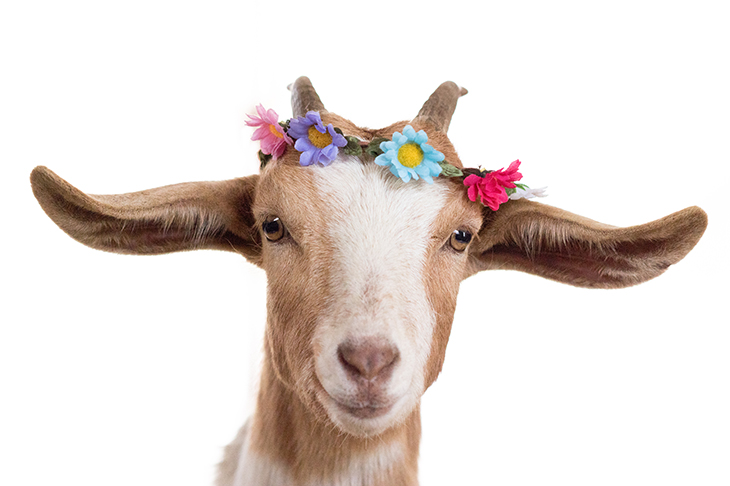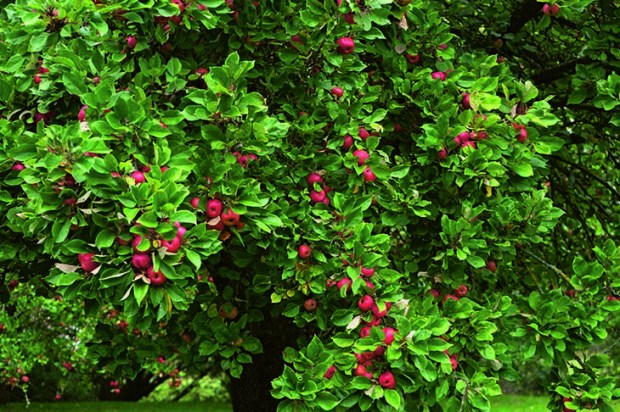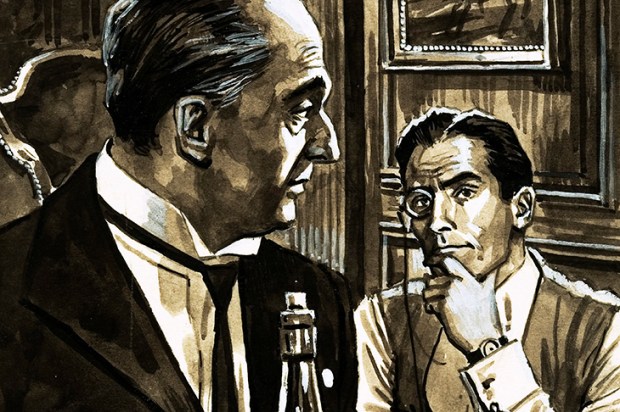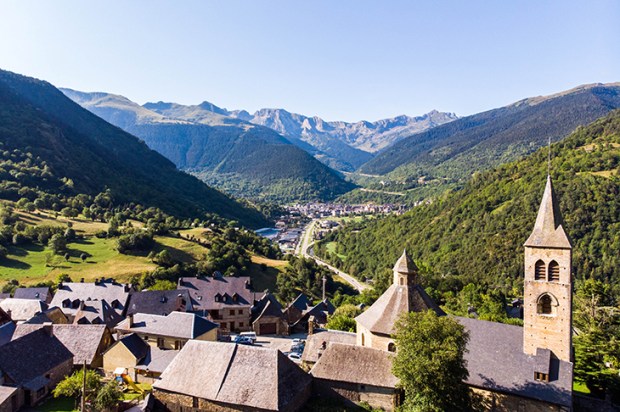A long and messy business is how the chef Rowley Leigh explains his preferred way of eating. Picking at a crab, for example, or eating raw young broad beans straight from the pod. He applies the same phrase to cooking. That too is messy, but not all the recipes in his new book take ages to make. Long, I thought as I gratefully lapped up Leigh’s wisdom, applies more to the time needed to become not just a fount of knowledge but also a man of very good tastes. You could include grumpy in the title of A Long and Messy Business (Unbound, £25); but I trust the advice and judgment of grumpy (not angry, mind) cooks.
It is a great cookbook, as much for what irritates Rowley as what doesn’t. He loves too many ingredients to list, but it is what he does with them, and the experience he offers, that puts this book in the if-you-buy-one-make-it-this-one category. Many recipes are those you need to know to produce pure and simple suppers, such as risi e lughaneghe, an insulating dish of risotto rice, lean sausage, parsley and parmesan. There are soups, exercises ‘in minimalism’, he says; ham hock with lentils, crab spaghetti with chilli and mint, poulet Antiboise, fruit fools and unmatchable advice on cooking fish.
Leigh is aggravated, however, by spring lamb, frozen peas, fusion food and clearly also by the book’s photographer, the superb Andy Sewell. This scratchy relationship, which pops up in places throughout, is mostly about Leigh being made to stand for too long holding something, Sewell’s scattered, dirty coffee cups or the age a soufflé crepe spent at the mercy of his camera lens. This brought back memories, because I have worked a lot with Sewell. He does take extraordinary pictures, rather slowly, and I have whipped more than a few collapsing gougères and congealing stews away from his camera.
I ate for the first time at Kricket in 2015, when the restaurant was housed in a converted shipping container in Brixton. There was room on benches for 16 diners and a queue outside. Finally getting to sit down, I was in a Rowleyesque state of crabbiness. All I can say, however, was how perfect the food was as it came to our table: bowlful after bowlful of colour, varied texture and the best of British ingredients — mackerel, cod’s roe, woodpigeon, samphire. There was no spicy gloop; Kricket’s food is light on fat, sugar and chilli, and is cooked by a British chef, Will Bowlby, who trained in India and mixes his respect for that country with bold ingenuity. That day I ate crunchy bhel puri, marbled with tamarind and date chutney, crab with butter and garlic, malai spiced hake and pumpkin with paneer. There are now two restaurants and Bowlby’s Kricket: An Indian Inspired Cookbook (Hardie Grant, £26) is the book I have been waiting for. I spent a happy evening testing out the samphire pakoras and KFC— that’s Keralan fried chicken, a Kricket bestseller.
Skye McAlpine is a heaven-sent new voice in cookery writing. The author of a popular blog, she was brought up in Venice, lives there part time and calls herself a Venetian housewife. A Table in Venice (Bloomsbury, £26) is her first book and is very beautiful. Her inside knowledge loses you in the side of Venice that tourists rarely get to enjoy — the markets, bakeries, bars and other secret places patronised only by locals — yet the recipes reveal that Venetian cooking is entirely accessible here, too. Much of it is humble food, with occasional feasts of meat or fish; and its northern aspect makes Venetian recipes rather suitable for damp Britain. In Dorset I had no problem buying the ingredients to make ravioli with speck, ricotta and mascarpone. Preparing the pasta needed less effort than I expected, and the resulting parcels of slightly smoky cream, dressed with sage butter, were quite wonderful. I want to cook all of this book.
Few have poured more energy and resources into sustainable food and farming than Carole Bamford. Daylesford Organic leads in awakening the organic sector to the concept that if it is to grow its influence, it has to excite interest not only in the health of soil, or chronic lack of it, but appetite, too. Nurture (Square Peg, £35) is full of conviction. Bamford’s determination to change minds about growing, eating and health comes to the fore but, like Skye McAlpine, she uses her extensive style to reel you in with seasonal recipes, appealingly and prettily presented. Here are leg of hogget with parsley crust, chicken liver paté with pickled blackberries, and tartiflette, one of my winter favourites, a baked pan of potatoes, bacon, stock, cream and cheese that, even made with organic ingredients, is affordable. Farming in Britain must undergo a revolution in the future, not just for the planet but also human health, and this nurturing book will inspire those with young who hold the future in their hands — the poor mites.
The inspirational Yotam Ottolenghi, along with his co-writers Tara Wigley and Esme Howarth, goes back to basics with Simple (Ebury Press, £25.) The title of the book is used as an acrostic. S for Short on time, I for Ingredients (ten or less); M for Make Ahead, and so on. These are then applied as codes to each recipe. Bulgar with tomato, aubergine and lemon yoghurt is coded I, M and E (for Easier than you think.) I ran it past my daughter, a brutal tester of recipes that make such claims as ‘15 minute preparation’ (Jamie Oliver failed her audit) and she gave it a thumbs up. A good present for time-poor cooks.
The year’s blueprint for a new way to cook falls to Niki Segnit, the author of the acclaimed Flavour Thesaurus. Her first book taught its many thousands of fans how to understand taste, and Lateral Cooking (Bloomsbury, £35) is designed to help creative cooks develop recipes. But I don’t see how listing every version of every dish while giving leeway to change it will make a cook confident. There is such a thing as too much trial and a surplus of error.
Anissa Helou’s Feast: Food From the Islamic World (Bloomsbury, £45) has authority. I have many books of this nature and admit to sighing ‘not another’; but Helou is a recipe writer with long experience, and an explorer as much as a traveller. She has discovered so much in her quest to put this enormous, luxuriantly illustrated book together. I spent an age poring over the breads alone, many of them flattish, flaky types cooked in a pan, others stuffed with meat, some spiked with spring onions or herbs, topped with aubergine or cheese.My chapatti pan is at the ready.
Ethiopia by Yohanis Gebreyesus, with Jeffrey Koehler (Kyle, £30), is also full of discovery. At last I have an explanation of injera, a strange, thin bread made with teff flour that doubles as a plate and spoon. Many years ago I spent an evening in an Ethiopian restaurant in Oregon, where injera, a kind of giant pancake, was put in the centre of the table. On it were little piles of different dishes and curries. You eat with solemn ritual, using your right hand skillfully to tear, pick up, roll and then dip, without making a mess.
Lastly, I’m trying to decide whom to give Goat to for Christmas, without insult or irony (Quadrille, £20). But I do see a lot of goat in local butchers and farm shops now and I’m grateful for James Whetlor’s advice and wide-ranging collection of recipes. Since the family are coming for Christmas, I may make kid pie. No, they won’t laugh either.
Got something to add? Join the discussion and comment below.
Get 10 issues for just $10
Subscribe to The Spectator Australia today for the next 10 magazine issues, plus full online access, for just $10.
You might disagree with half of it, but you’ll enjoy reading all of it. Try your first month for free, then just $2 a week for the remainder of your first year.



![The China-Russia East Route pipeline under construction in 2017. At 3,968 km in length, it is designed to carry 38 billion cubic metres of natural gas from Russia’s Far East to Shanghai. [Getty]](https://www.spectator.com.au/wp-content/uploads/2018/11/Pipeline.jpg?w=620)










Comments
Don't miss out
Join the conversation with other Spectator Australia readers. Subscribe to leave a comment.
SUBSCRIBEAlready a subscriber? Log in